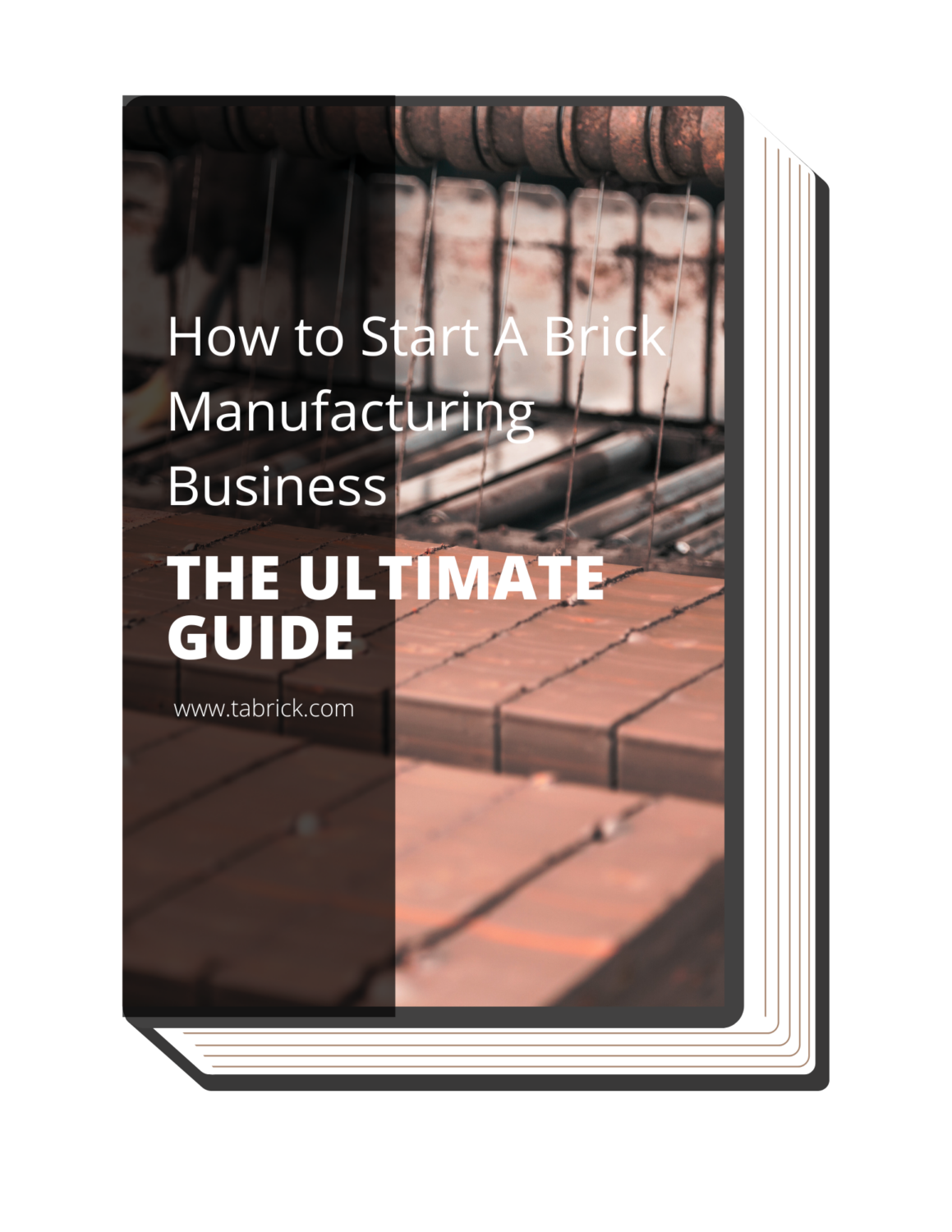Navigating the world of cement brick manufacturing machines can seem like a formidable task, particularly with the plethora of options available in the global market. Amid this vast array, China’s cement brick manufacturing machines stand out, offering a blend of innovation, efficiency, and affordability.
However, the critical challenge lies in discerning the right machine for your unique needs, given the wide variety of models and specifications.
Fear not, because this article aims to demystify this seemingly complex arena, providing you with a comprehensive guide to selecting the most suitable Chinese cement brick manufacturing machine for your operation.
So, Let’s dive in!
1. Overview of Cement Brick Manufacturing
Cement brick manufacturing is an age-old industry, having been around for centuries. It involves the production of bricks, fundamental building blocks in any construction project, using cement as the primary raw material. However, the industry has seen a significant shift in recent years, moving away from labor-intensive methods to automated production lines.
The cement brick manufacturing process begins with the sourcing and preparation of raw materials, followed by precise mixing, molding, and curing processes to produce high-quality bricks. China, known for its manufacturing prowess, has become a leading player in the cement brick manufacturing machine industry. It’s been fascinating to see evolution firsthand.
The rise of Chinese-made cement brick manufacturing machines is fueled by their ability to increase production efficiency, reduce costs, and ensure consistency in brick quality, among other advantages. As someone who’s spent a fair share of time in the manufacturing industry, these machines are a game-changer, transforming the way we think about brick production.
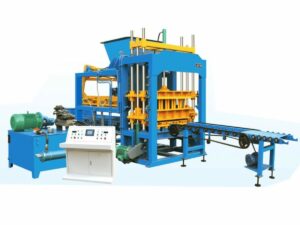
2. Advantages of Using Cement Bricks Manufacturing Machines
The integration of cement brick manufacturing machines into the construction industry is no random occurrence. It is a deliberate move prompted by the numerous benefits these machines offer. Here’s how they’re transforming the brick manufacturing landscape.
Increased Production Efficiency
According to the study conducted by APN, brick production is a large and rapidly growing industry in many parts of Asia, its consistent growth in the construction industry boasted of an average growth rate of 1.2% during 2000-04 and then experienced a great boom during 2004-07 when it grew at an average rate of 18% per annum.
Cement brick manufacturing machines significantly increase the production efficiency of brick manufacturing. These machines, with their advanced automation capabilities, can produce thousands of bricks in a fraction of the time it would take manual labor.
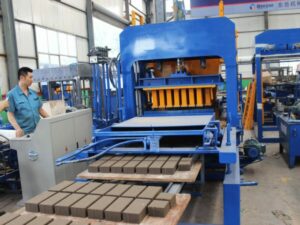
Cost-Effectiveness
The high production efficiency of cement brick manufacturing machines also translates into cost-effectiveness. By automating the brick manufacturing process, these machines reduce the need for labor, thereby cutting down on labor costs.
Additionally, the machines’ ability to produce high-quality bricks consistently minimizes wastage, contributing to cost savings. Seeing the cost savings firsthand has been truly remarkable. The money we save on labor and waste reduction significantly improves our bottom line, making the investment in these machines well worth it.
Consistency in Quality
One of the greatest advantages of cement brick manufacturing machines is the consistency in quality they provide. These machines follow a precise production process, ensuring each brick is of the same size, shape, and quality. Consistent quality is crucial in construction, as it guarantees the structural integrity of the buildings.
The quality consistency I’ve seen from these machines is truly impressive. Every brick produced is virtually identical to the last, providing a level of precision that manual methods simply can’t achieve.
Reduced Manual Labor
Cement brick manufacturing machines significantly reduce the need for manual labor. This not only improves efficiency but also reduces the potential for human error. A study found in MDPI, that labor plays an important role in the construction industry produces about 8.4% employment in the world.
Traditionally, brick manufacturing was a labor-intensive process, but these machines have automated many of the tasks once done by hand. The machines have taken over the bulk of the production process, freeing up our workforce to focus on other important tasks.
Environmentally Friendly Manufacturing
The use of cement brick manufacturing machines also promotes environmentally friendly manufacturing. These machines utilize raw materials efficiently, minimizing waste. Additionally, their energy-efficient operation reduces the carbon footprint of the brick manufacturing process.
3. Types of Cement Brick Manufacturing Machines
The cement brick manufacturing machine industry is diverse, with several types of machines available, each offering unique capabilities. Here’s a look at some of the most common types of cement brick manufacturing machines:
Hydraulic Press Machines
Hydraulic press machines are a popular choice in the cement brick manufacturing industry. These machines use hydraulic pressure to form bricks, ensuring high density and strength. With their high output and reliable operation, hydraulic press machines are ideal for large-scale brick manufacturing.
I’ve found that hydraulic press machines offer an unbeatable combination of speed and quality. Their high-pressure operation ensures each brick is formed perfectly, resulting in high-quality products every time.
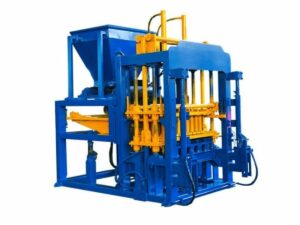
Automatic Brick Making Machines
Automatic brick making machines are designed for seamless, efficient production. These machines require minimal human intervention, automating the entire process from raw material feeding to brick formation. This automation not only increases efficiency but also reduces the likelihood of errors that can occur in manual operations.
Manufacturers like Tabrick transformed our production line into a smooth, efficient operation, and the increase in output has been substantial.
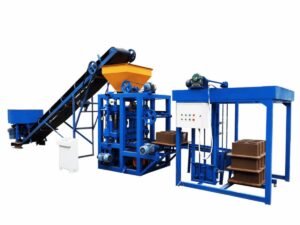
Mobile Brick Making Machines
Mobile brick making machines provide the unique advantage of portability. These machines can be transported to different sites, enabling on-site production of bricks. This eliminates the need for transportation of bricks from the manufacturing unit to the construction site, reducing costs and time.
And the best part is that being able to manufacture bricks directly on-site will save you time and money, and give you a competitive edge in the market.
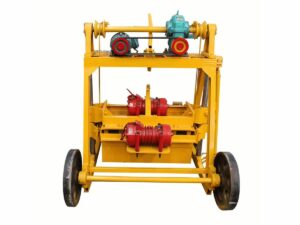
Interlocking Brick Machines
Interlocking brick machines specialize in producing bricks with interlocking patterns. These bricks, when used in construction, interlock with each other, providing enhanced stability and strength to the structure. They’re particularly useful in regions prone to natural disasters like earthquakes.
The benefits of interlocking bricks can’t be overstated. They’ve allowed us to offer a unique, value-added product that not only has structural advantages but also provides an aesthetic appeal.
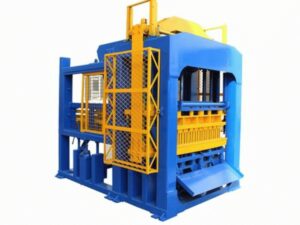
4. Components of Cement Bricks Manufacturing Machines
A closer look at the cement brick manufacturing machines reveals a symphony of carefully coordinated parts. Each component plays a crucial role, harmoniously working together to transform raw materials into sturdy bricks. Here are the key components that make this impressive feat of engineering possible:
Mixer
Drawing from my years of hands-on experience in the field, the mixer is a crucial component in cement brick manufacturing. It combines raw materials such as cement, sand, water, and other aggregates in the correct proportions to create the brick mixture. The quality of the bricks depends largely on the uniformity of the mixture achieved by the mixer.
Belt Conveyor
The belt conveyor is used to transport the mixture from the mixer to the brick making machine. It plays a key role in maintaining a continuous production line and ensuring that the brick making machine has a steady supply of mixture to mold into bricks.
Brick Making Machine
Having been around these machines for a good part of my career, I can tell you that the brick making machine is a marvel of engineering. It consolidates the mixture, often using vibration or pressure, to ensure the bricks are compact and durable. One type of brick making machine is the hydraulic brick making machine, which uses hydraulic pressure to form the bricks.
Control System
The control system is the ‘brain’ of the operation. It manages the production process, ensuring that the raw materials are dispensed and mixed in the correct proportions, the bricks are formed and compacted properly, and the production line operates smoothly. It may also include automation features that control the conveyor system and the brick making machine.
Stacker
Once the bricks are formed and solidified, they need to be stacked for storage and transportation. The stacker automates this process, lifting and stacking the finished bricks neatly and efficiently, ready for curing or dispatch. In some systems, a finger car is used to lift moulded bricks coming out of the brick making machine.
5. Manufacturing Process of Cement Bricks
The meticulous process of creating these sturdy building blocks is an intricate ballet of precision and practicality. Now, let’s dance into its key steps:
Step#1 Preparation of Raw Materials
The process starts with the preparation of raw materials, which typically include cement, sand, and water, among other aggregates. These materials are selected based on their quality and suitability for brick manufacturing. The precise composition of the raw materials can vary based on the desired properties of the final bricks.
Step#2 Batching and Mixing
Once the raw materials are prepared, they are combined in the correct proportions in a process known as batching. After batching, the materials are thoroughly mixed together to form a uniform mixture. The quality of this mixture is crucial for the properties of the final bricks.
Step#3 Molding and Compaction
This is where magic really starts. The mixture is then transferred to the brick making machine where it is molded into the shape of bricks. This process often involves the application of pressure or vibration to compact the mixture and ensure the bricks are durable and evenly formed.
Step#4 Curing Process
After the bricks are formed, they undergo a curing process. This involves maintaining the bricks in a controlled environment where temperature and humidity are regulated. The curing process allows the bricks to harden and develop their final strength and durability.
Step#5 Quality Control and Testing
Once the bricks have been cured, they undergo quality control and testing. This step ensures that the bricks meet the necessary standards in terms of size, strength, and durability. Any bricks that fail these tests are discarded. But let me tell you, seeing those perfect, high-quality bricks pass the test – there’s nothing quite like it.
Step#6 Stacking of Bricks
Finally, the bricks that have passed the quality control and testing process are stacked and prepared for shipment. This involves arranging the bricks neatly on pallets, ready for transportation to construction sites or retail outlets. The stacking process must be carried out carefully to avoid damaging the bricks.
6. Safety Measures When Operating Cement Bricks Manufacturing Machines
The machinery involved in this process can be complex and potentially dangerous if not handled correctly. Thus, implementing stringent safety measures is vital to safeguard operators and ensure the smooth running of the manufacturing process. Here are some safety measures to keep in mind:
Proper Training of Operators
This involves learning about the machine’s operation, the potential hazards, and the steps to take in case of an emergency. Trained operators can effectively minimize the risk of accidents, ensuring not only their safety but also the efficiency of the production process.
Consider it like learning to dance – you need to know the steps, the rhythm, and how to recover when you trip. An example would be a manufacturing plant that experienced a significant drop in workplace accidents after implementing a comprehensive training program for its machine operators.
Regular Maintenance Checks
These checks help identify any potential issues with machinery before they become serious problems. Regular maintenance ensures that the machines are in good working condition, reducing the risk of malfunctions that could lead to accidents or production delays.
A fact to consider is that preventive maintenance, such as regular check-ups to the machine, can significantly extend the lifespan of industrial equipment.
Use of Protective Gear
Protective gear is an essential safety measure when operating cement bricks manufacturing machines. Workers should wear appropriate gear, examples are safety helmets, gloves, and eye protection, to protect against potential hazards.
The use of protective gear can prevent a wide range of injuries, from minor cuts and scrapes to more serious injuries that could result from accidents. You know, it’s just like a knight going into battle – the right armor can make all the difference.
The following table outlines various safety measures and their corresponding implementation responsibilities when operating cement bricks manufacturing machines.
| Safety Measures |
Description |
Implementation Responsibility |
| Use of Protective Gear |
Workers should wear appropriate protective gear, such as safety helmets, gloves, and eye protection. |
Workers, Safety Department |
| Machine Guards |
Machines should be equipped with guards to prevent accidental contact with moving parts. |
Maintenance Department, Machine Operators |
| Proper Training |
Operators should receive thorough training on machine operation and safety procedures. |
Training Department, Supervisors |
| Regular Maintenance |
Regular maintenance and inspection of machines can help identify potential hazards and prevent accidents. |
Maintenance Department, Supervisors |
| Emergency Stop Buttons |
Machines should be equipped with easily accessible emergency stop buttons for immediate shutdown in case of emergencies. |
Machine Manufacturers, Maintenance Department |
| Lockout/Tagout Procedures |
Lockout/tagout procedures should be followed to ensure machines are properly shut down and de-energized before maintenance or repairs. |
Maintenance Department, Machine Operators |
| Fire Safety Precautions |
Adequate fire safety measures, including fire extinguishers and evacuation plans, should be in place. |
Safety Department, Fire Safety Officer |
| Housekeeping Practices |
Maintaining a clean and organized work area can help prevent slips, trips, and falls. |
Workers, Supervisors |
| Communication and Signage |
Clear communication of safety instructions and proper signage should be in place for workers’ awareness. |
Safety Department, Management |
| Regular Safety Inspections |
Regular safety inspections should be conducted to identify and address any potential hazards. |
Safety Department, Inspectors |
| Reporting of Unsafe Conditions |
Workers should be encouraged to report any unsafe conditions or incidents to the appropriate personnel. |
All Employees, Safety Department |
Compliance With Safety Regulations
Adherence to safety regulations is critical when operating cement bricks manufacturing machines. These regulations are designed to protect workers and ensure the safe operation of equipment. Non-compliance can lead to serious consequences, including accidents, fines, and legal action.
Regular audits and inspections can help ensure that all safety regulations are being followed. Here are the breakdown of key aspects of complying with safety regulations:
Personal Protective Equipment (PPE)
The use of appropriate safety gear is a cornerstone of adherence to safety regulations. From hard hats to safety glasses and gloves, the right PPE shields workers from a wide array of potential hazards. It’s like having a personal bodyguard against workplace accidents.
Machine Maintenance
Regular inspection and maintenance of the machinery is essential. This ensures all components are functioning properly, nipping potential malfunctions in the bud. Picture it as a regular health check-up, but for your machines.
Proper Training
This not only involves knowing how to use the machine but also understanding the safety procedures and what to do in case of emergencies. It’s like getting a driver’s license – you need to know the rules of the road to drive safely.
Emergency Preparedness
Having a well-planned emergency response procedure is another significant aspect of safety compliance. This includes having accessible first aid kits, evacuation plans, and trained first responders. It’s like having a well-rehearsed fire drill – you hope you’ll never need it, but it’s indispensable when you do.
7. 5 Key Features To Consider When Choosing a Cement Brick Manufacturing Machine
When investing in a cement bricks manufacturing machine, there are several key features to consider. These features will directly impact the productivity, cost-effectiveness, and sustainability of your operation. By paying attention to these factors, you can ensure that you choose the right machine for your specific needs and objectives.
#1 Production Capacity
The production capacity of the machine is a crucial factor to consider. According to Indeed, this refers to the number of bricks the machine can produce within a specific period, such as an hour, day, or week. The higher the production capacity, the more efficient your operation will be.
However, it’s important to match the production capacity to your demand to avoid unnecessary costs or unused capacity. Think of it as your own personal brick conveyor belt, rolling out beautiful, fresh bricks as smooth as clockwork.
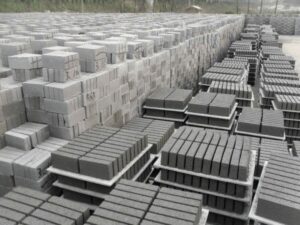
#2 Quality of Bricks
The machine should be able to produce bricks that meet industry standards in terms of size, shape, strength, and durability. High-quality bricks will be more in demand and can command a higher price on the market. Fly ash brick machine manufacturers like Tabrick will provide you with a machine that produces high quality bricks, that can lead to satisfied customers and reduce potential structural issues.
#3 Maintenance Requirements
Consider the frequency and complexity of maintenance required for the machine, similar to the considerations one would make for a fly ash brick machine. Regular maintenance can extend the lifespan of the machine and ensure it operates at peak efficiency. However, if the maintenance requirements are too demanding, it can lead to increased downtime and higher operating costs.
#4 Energy Consumption
The energy consumption of the machine can have a significant impact on operating costs and environmental sustainability. Machines with high energy efficiency can reduce energy costs and contribute to a lower carbon footprint. Conversely, machines with high energy consumption can lead to higher operating costs and a larger environmental impact.
From my personal perspective, investing in energy-efficient machinery is not just about cost-saving. It also aligns with the global move towards sustainable practices, enhancing the company’s reputation and contributing to environmental conservation.
#5 Cost
Finally, the cost of the machine is a crucial factor to consider. This includes not only the initial purchase price but also ongoing costs such as maintenance, energy consumption, and potential repair costs. It’s important to consider the total cost of ownership when choosing a machine.
Dive Deeper Into Our Resources
Looking for more diverse product options? Browse through our handpicked selections:
For some insightful reads, we’ve curated a list of recommended articles just for you:
Still haven’t found what you’re looking for? Don’t hesitate to contact us.
We’re available around the clock to assist you.
Conclusion
I sincerely appreciate the time you’ve taken to read through this article. We’ve traversed various crucial aspects of operating cement bricks manufacturing machines and selecting the right machine for your operation, and I hope you’ve found the insights valuable.
Remember that choosing the right machine requires careful consideration of numerous factors. Should you have further questions or need more detailed information, please do not hesitate to contact us. We are here to assist you in making the best decision for your brick manufacturing venture a resounding success.







